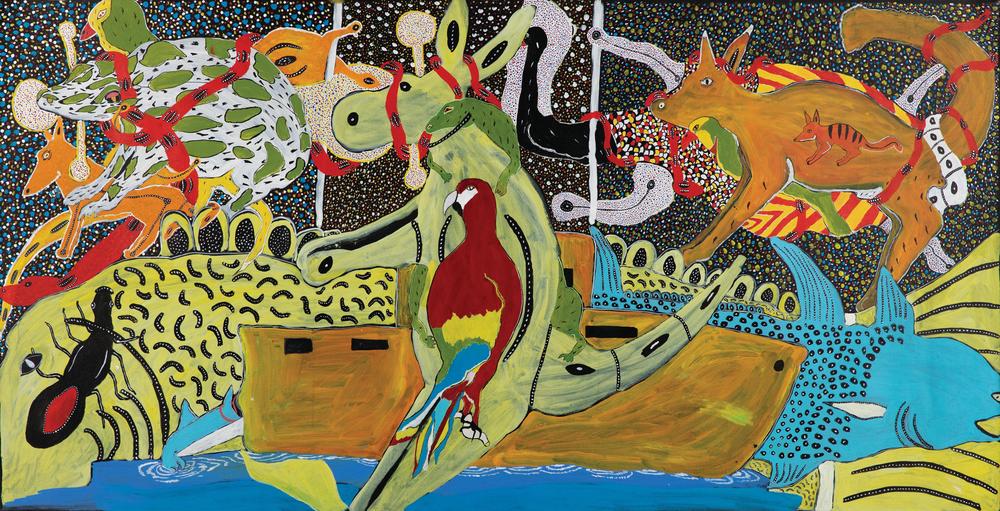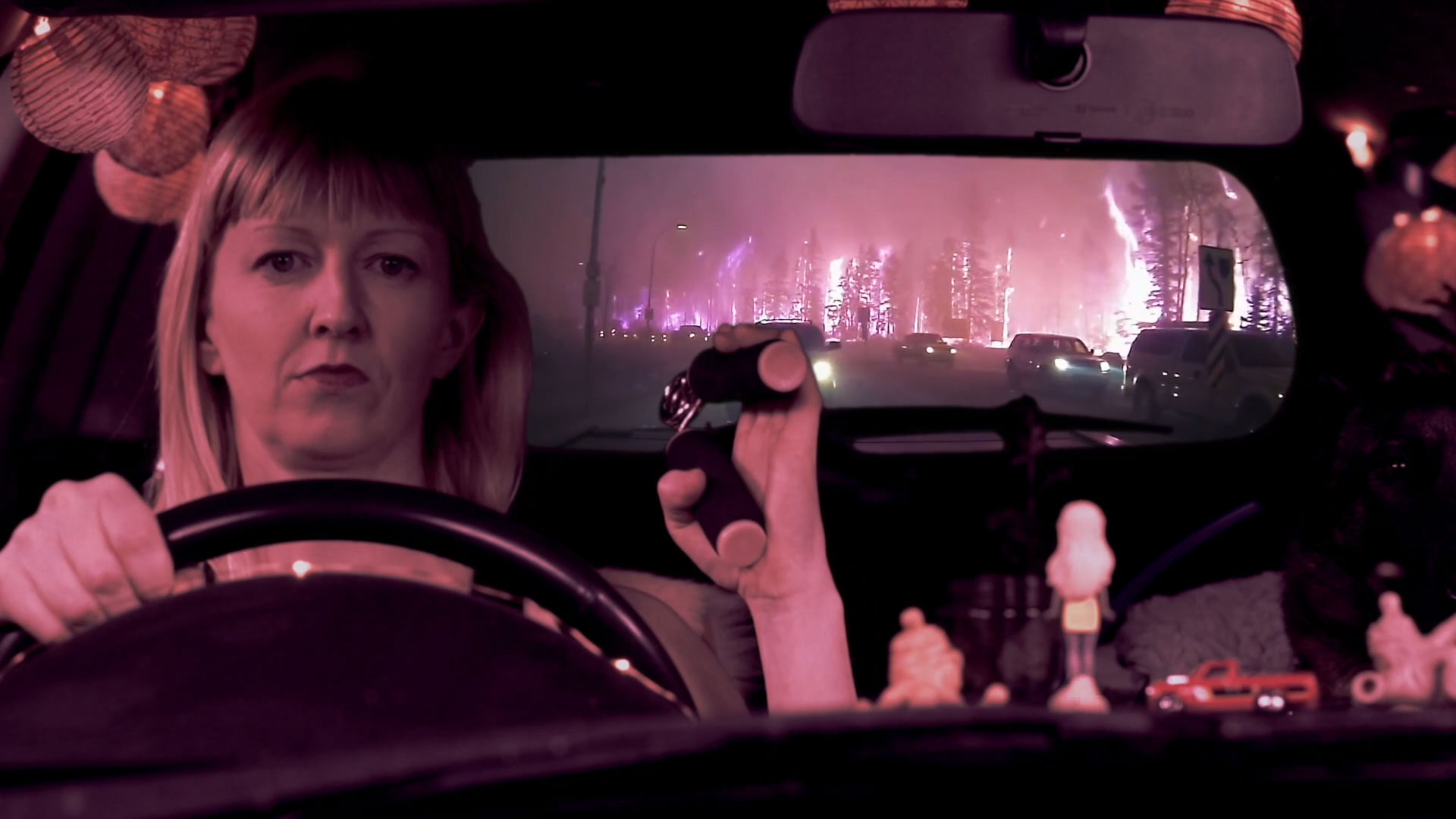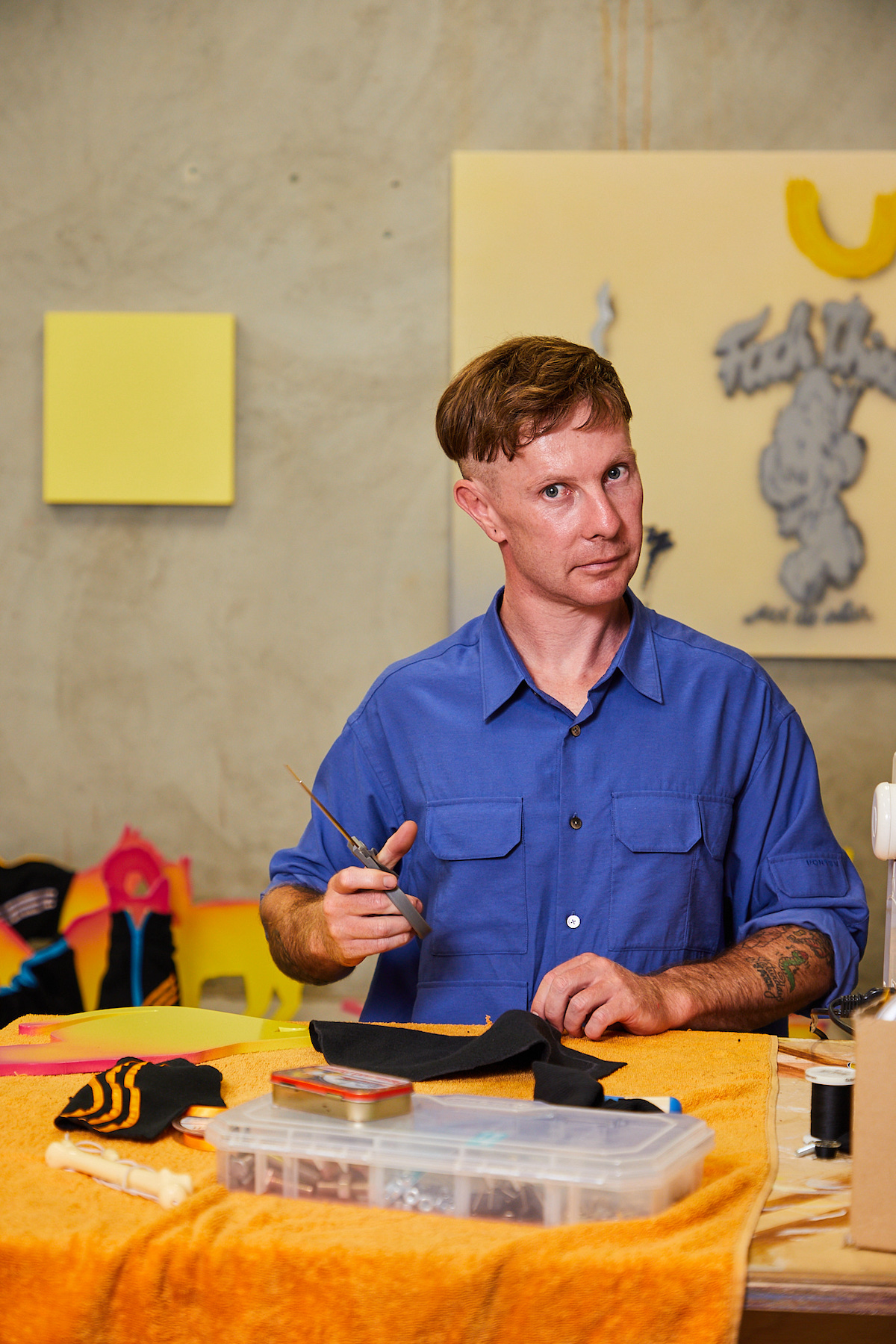In the first exhibition of its kind, 100 Vandals celebrates the role of graffiti in Western Australian culture
AGWA’s guest artistic director Ian Strange speaks to 100 Vandals co-curator and one of Perth’s earliest graffiti writers, Mike Shime, about the evolution and role of this contentious art form in Perth.

THE GRAFFITI AND STREET ART communities have made a significant contribution to the Western Australian art landscape. Yet, the story of this movement’s emergence in Perth is largely untold.
While graffiti, and the act of graffiti, can be traced back through human history and across cultures, what we now know as the graffiti art movement has its origins in the US—in Philadelphia and New York, in the late 1970s. From its early origins in American urban centres, the movement quickly spread around the world and first emerged in Western Australia in the early 1980s. Many of Perth’s first painters describe only seeing graffiti for the first time in the background of films, TV shows, and the now-infamous Subway Art (Holt, Rinehart and Winston)—the first book to comprehensively document New York’s emerging subway graffiti, published in 1984.
But in pre-internet Perth, information was limited and the artform’s development relied on local ingenuity. A small group of Perth high school students, with no knowledge of what this global art movement would become, had to make it up themselves. This meant working out how to use the limited colour range of spray paint at the time, and improvising spray nozzles taken from hairspray and shoe polish. What those teenagers started in Perth birthed a local art scene that swelled to thousands of members. Its stars have travelled the world, painting and exhibiting nationally and internationally, and on one occasion, some were even commissioned to paint large-scale murals for the 2004 Olympics in Athens.
The 100 Vandals display in AGWA’s The View From Here exhibition contains over 100 sketches from this community; the first exhibition of its kind at AGWA. The display takes in a range of artists, from the movement’s originators to today’s emerging graffiti writers. AGWA guest artistic director Ian Strange spoke with one of Perth’s earliest graffiti writers, Mike Shime, who co-curated 100 Vandals alongside fellow artist Trevor Bly. Their conversation traverses the exhibition, the origins of graffiti in Perth, and what it means for the state gallery to acknowledge these artists for the first time.
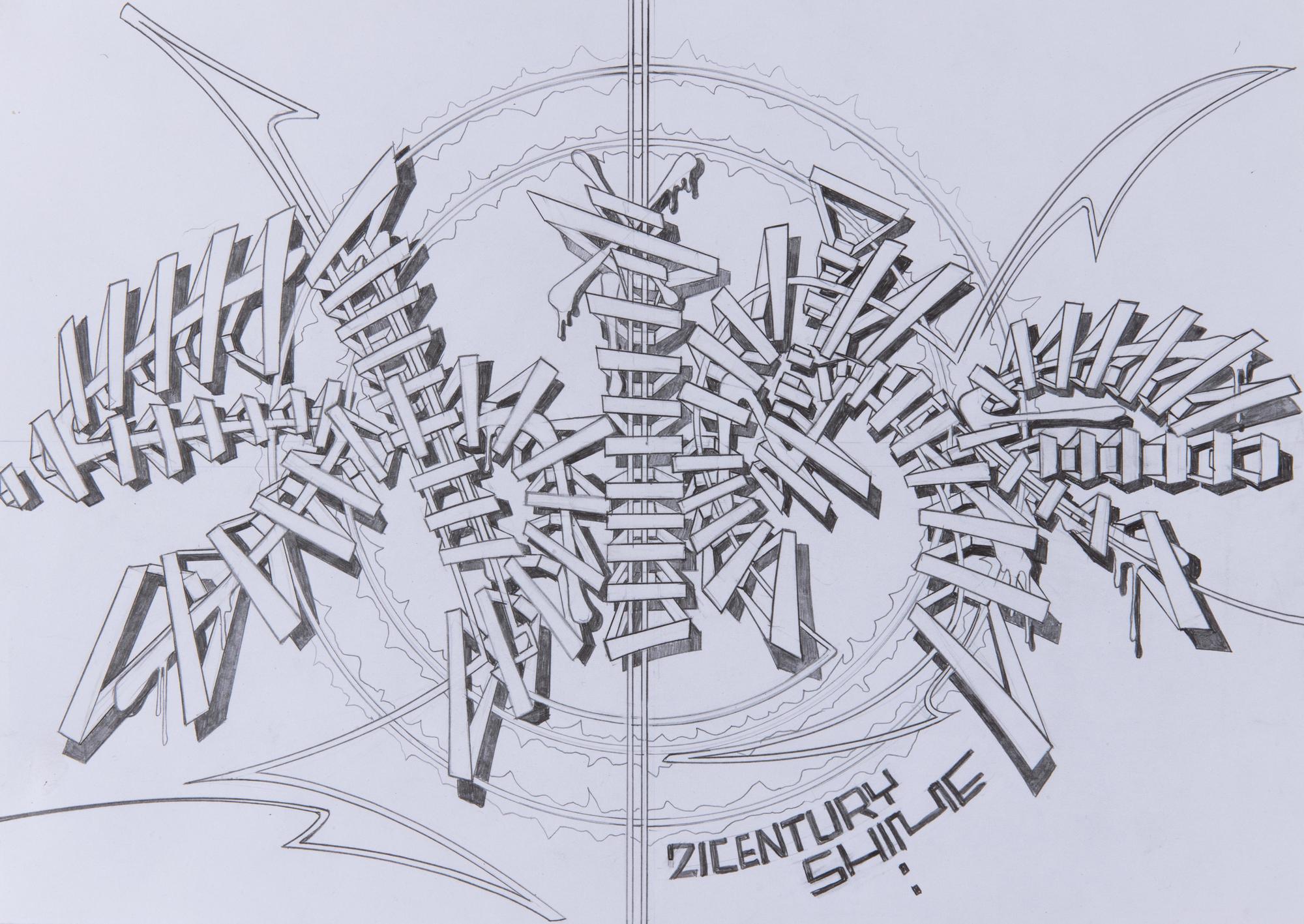
As a teenager, you were among some of the first people to paint graffiti in Perth in the early 1980s. How did you become part of this bigger scene taking shape in the city?
Well, I didn’t know anyone else was doing what I was doing. I went looking to see what else was out there. The whole artform revolved around the trains, so I’d jump on a train and go looking. I think the first pieces I saw by other people were Dolby and BJ at Daglish train station, and another Dolby a bit further down at Showgrounds. It blew my mind. On the Midland train line, out towards Guildford, I found some stuff by Deli. I thought it must be all related. I eventually met some of those guys [at the] end of 1985, maybe early 1986. They started to tell me they were doing stuff in Northbridge. We’re talking pre-internet, pre-mass communication, so to see anything you had to go see it in real life.
What was it like making those early connections?
For a 14-year-old kid, this is mind-blowing stuff. And there was just absolutely nothing, nothing out there to show you how to do it. I must admit, the very first piece I did, when I was spraying, it was dripping, it wasn’t working. I had no idea that I had to move the can side to side, how close I had to go. So you’d talk to the other kids that were doing it. It was a huge learning curve, people were showing each other how to do stuff.
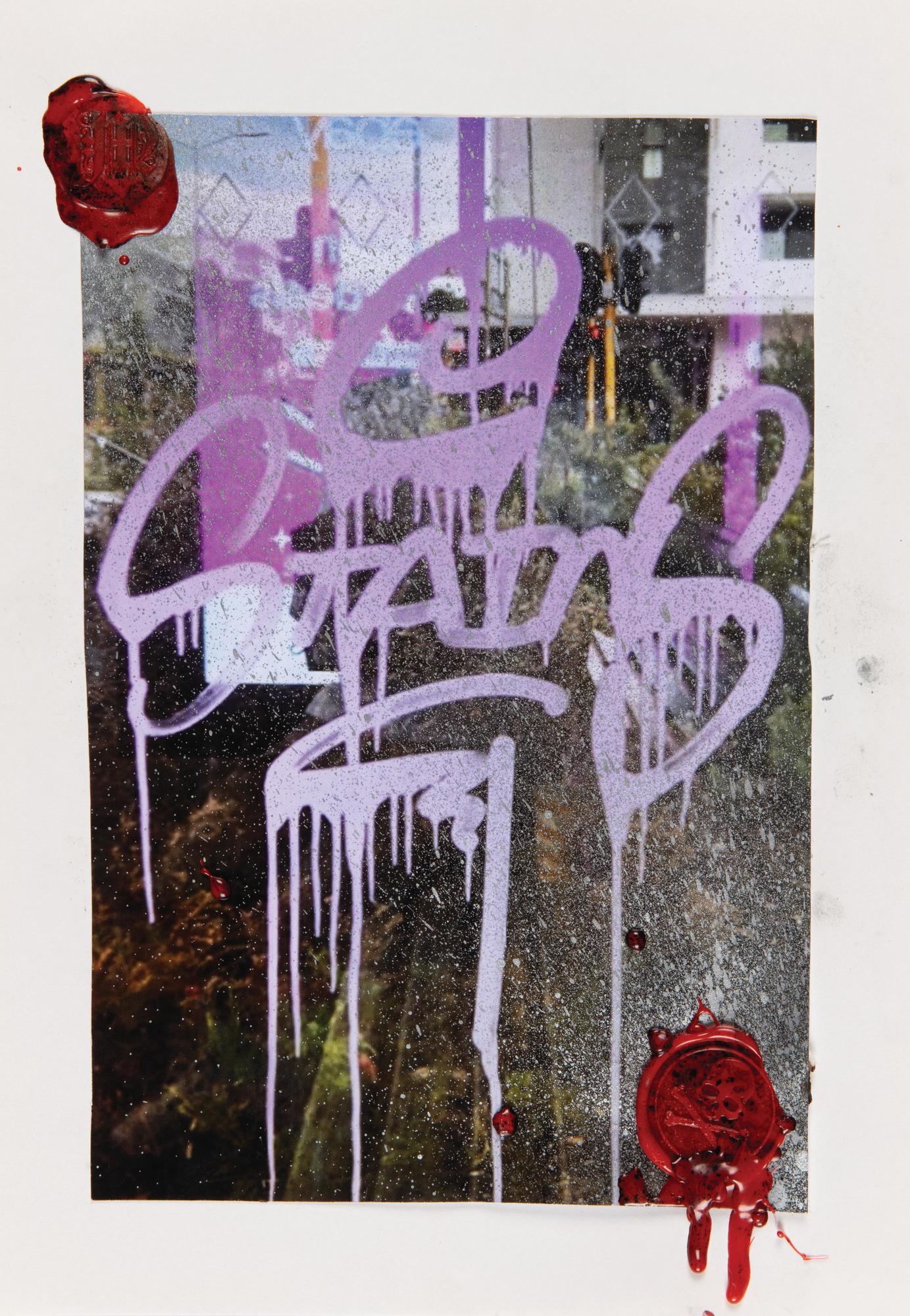
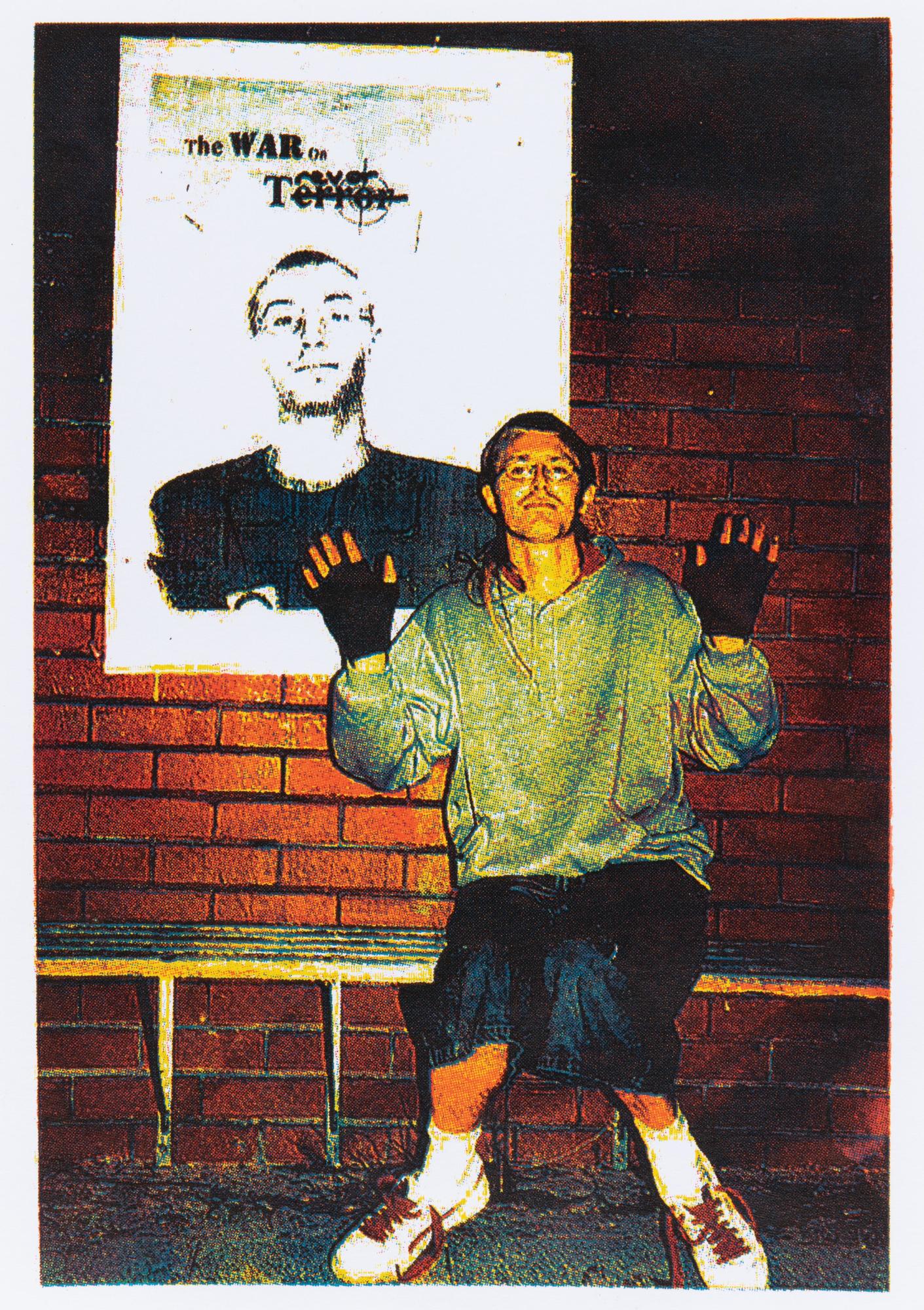
When did your interest in graffiti start intersecting with the law?
We’re talking about before graffiti was illegal, before they had laws. I had been painting for a couple of years, and myself and a friend wanted to hit a high-value target on the railway line inside the central station at Perth. And we got away with that. But the first bus didn’t come until six o’clock in the morning, so we camped down at Supreme Court Gardens for the night. These two gentlemen woke us up in uniform and asked us to move along, so we did. But unfortunately, somebody else had been through the city that night and did traditional-type graffiti—like what people thought it was back then, writing all sorts of comments about nothing, nothing to do with the art form. And because the cops had seen the spray cans in our bags, they thought it must’ve been us. We were like “No, we don’t do that stuff.”
They asked what the paint was for and we … weren’t forthcoming with the truth. They said they’d charge us with all this other stuff unless we told them what we did. So we made them climb over and down onto the railway tracks. They were like “What is that?”. We said “Well, it’s a piece.” They didn’t know what that was. The cop got on his radio and said: “We’ve got two young fellas here, and they’ve done, like, colourful patterns on a wall in spray paint. I don’t even know what it is.” We got brought in and I remember they pulled out this massive book, slammed it down on the table, and they’re going through it, this book of all these laws, and there’s nothing there against illegal painting on a wall. We ended up getting charged with trespassing actually. Because there was no graffiti law, there was no law against it. The cops didn’t know what it was. That was the end of ’86.
And did you start to see an increased criminalisation of graffiti from that point?
Come 1989, people seemed to start to notice that there was a hell of a lot of graffiti going on. They learned that it was called graffiti. The media started doing stories about all these weird scribbled names on surfaces around the city. For me, that’s actually what picked it up and gave it voice—all of a sudden you had kids writing their names all over the city. But when people had acquired paint, they couldn’t waste it going around writing their names everywhere because they wanted to save it to do a piece. That’s when the early graffiti laws came out, late-1980s, early-1990s. It was a crackdown. There was a push against people painting on walls and especially against these crazy words they were doing that no one could understand outside the community. Of course, everybody within the graffiti community could understand—it was a form of communication.
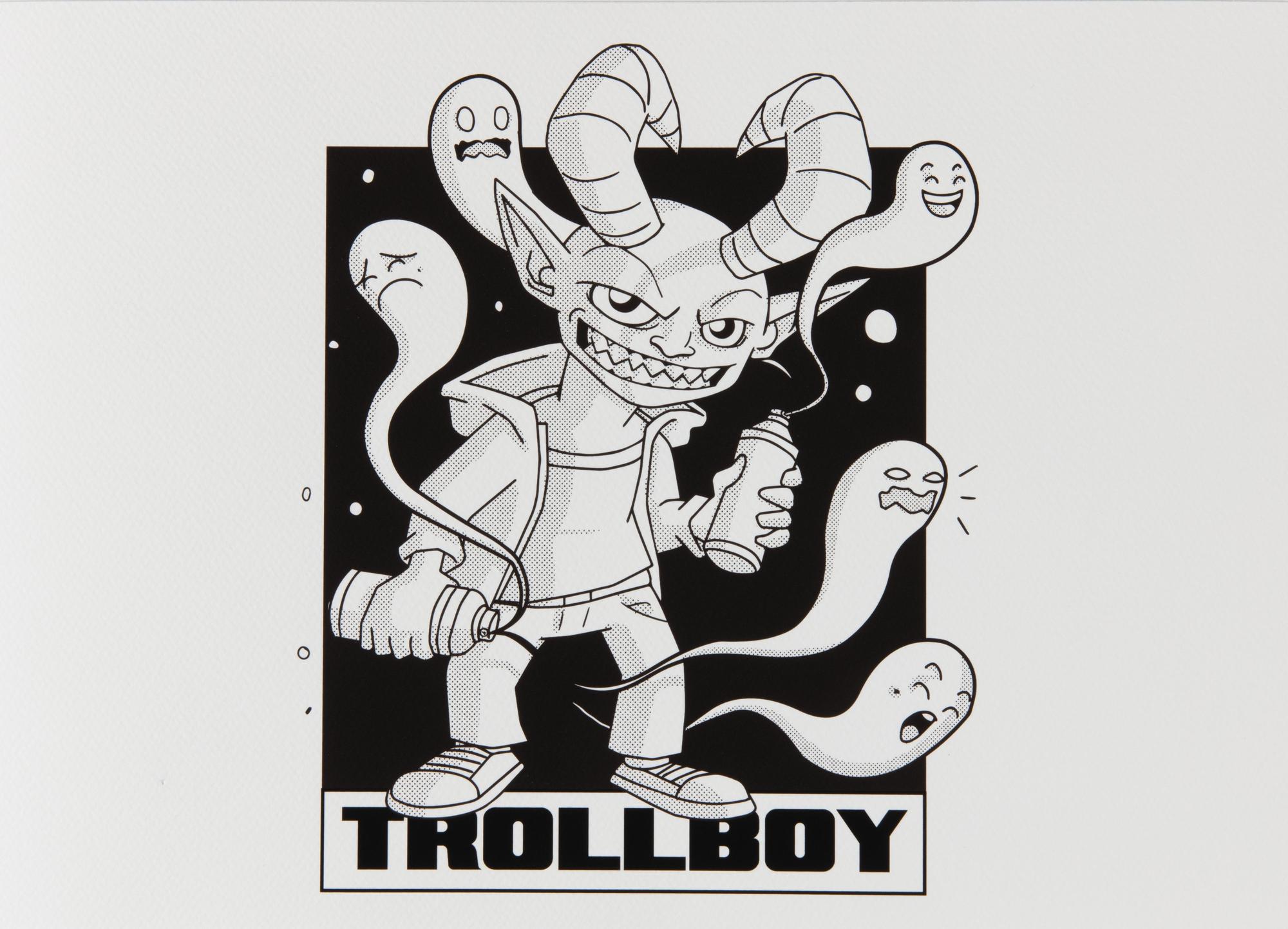
How did the art form grow under those circumstances?
Well, no one in Perth really knew if it was going on elsewhere. BJ and DELI actually got on a bus to Melbourne and Sydney to see if the artform was actually over there. I remember there was a group of us waiting for them as soon as they got back and stepped off that bus, and they were like “Mate, you’re not going to believe it, it’s over there and it’s rife.” They came back with a bag full of film to get developed and we were blown away at how big the artform was over there. We were always looking at photos, and everything looks smaller and neater in photos, so Perth developed this sort of really clean method of painting, because that’s what we thought it was. We’d scour magazines, we’d look for anything in the background of a band photo, anything to show artwork from other cities. Even if it was in black and white. It became our mission to save money, travel overseas and see things. When you travelled overseas, you just needed your photos to show what you did, you needed some nozzles, just in case you had none. And you needed a passport to get into that country. You’d just go there and you’d hear about, you know, the Hall of Fame in London, and you’d meet people painting there and you just spoke the same language. We all became obsessed.
How did Perth’s graffiti scene compare to those other cities at that moment?
Well, people wanted to come to Australia. I mean, yes it all started on America’s east coast, and then it spread to the west and all that. But Australia was there quite early on as well. Not from the 1970s early, but early. People from overseas started coming to Australia and seeing the quality of the art. We had people like Loomit come here, we had Mode2 come to Perth. We had Darko, we’ve had Toast, we’ve had Dime. That’s all pre-internet, all verbal exchange. People sat down with their black books [sketch books]; they had them overseas, we had them here. And people drew in each other’s books. That book would go back to the person’s country of origin with that artist and other people would see it. The black book was the pre-internet exchange of ideas. And people wanted to go to Australia, just for the graffiti. It was a tourist attraction, which cities eventually started to work out. You could tell a city by the style of what was in that black book, you could tell a crew by its style, and an individual. Styles ran from the individuals to crews to cities to countries. Nowadays everything is a little more homogenous, it’s different.
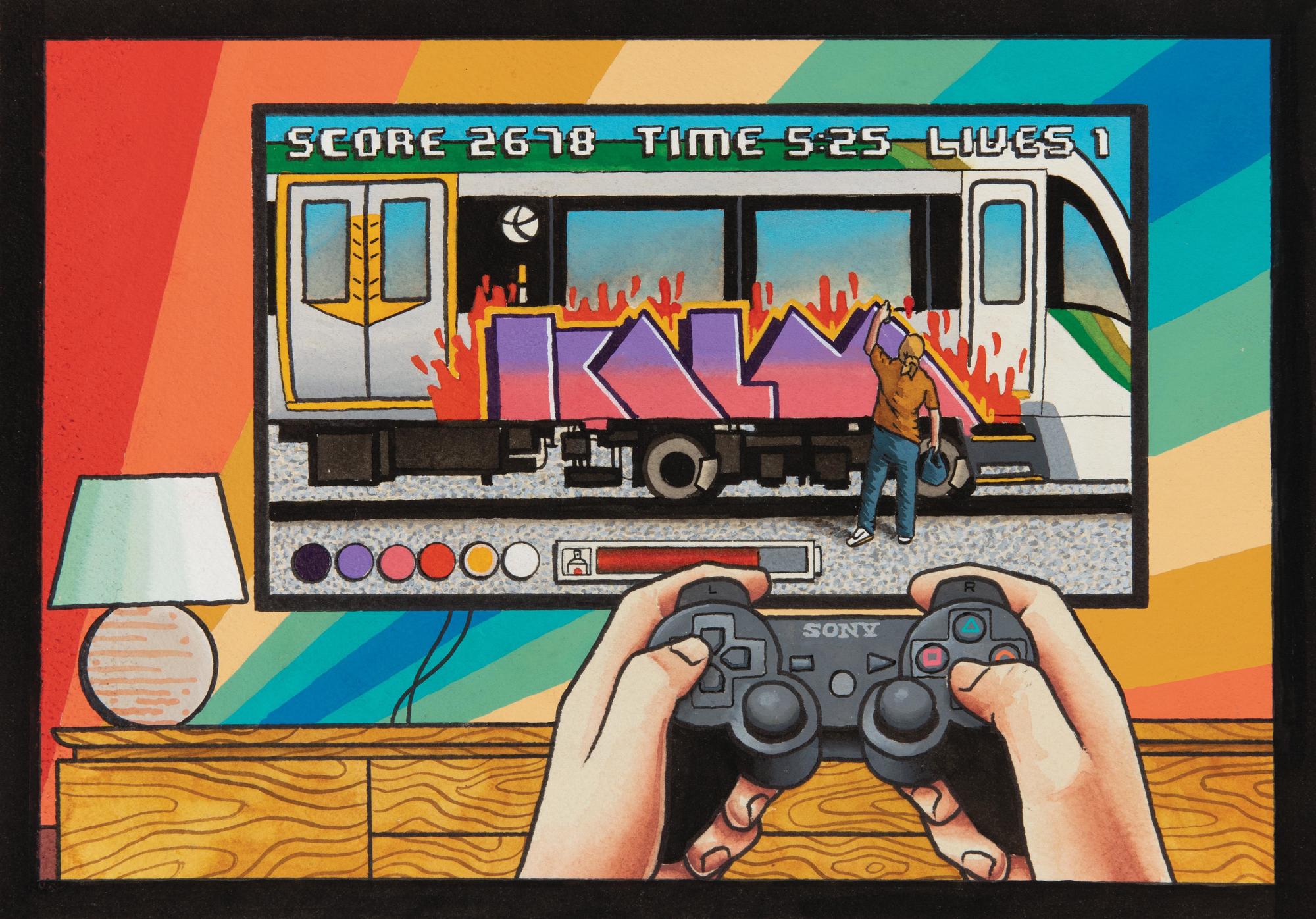
How do you think graffiti artists are seen by the wider community?
When you look at the media coverage of it, it’s negative, you know. It’s all: “Vandals, what do they think they’re doing, they’re mindless, they’re destroying people’s property, they’re destroying the community.” I mean, these people are part of the community, and they’re painting images of their community, within their community, for their community. So to ostracise them and say that they’re not part of the community? They are actually very much part of the community.
I’m not saying every graffiti person is an angel, of course not. But not every government official is either. You’ve got all these different groups and they want to occupy the same space. Some want lots of colour. Others want it plain, one colour. I know what I like. A city is made of concrete and bitumen and steel and glass. I can’t see that as beautiful, it’s drab and boring. But I can see lots of colour and nature as beautiful. Through that, I can see the city as beautiful. But that’s the way I see the world. Everyone’s going to be different.
How do you think about graffiti?
Throughout history, most paintings were done on a canvas. Then, the impressionists were still painting on canvases, but they used to take their canvases outside and paint, then bring them back in. And people freaked out about that. Those guys broke the mould. With graffiti, we’ve taken the artwork outside and left it outside. So the viewer doesn’t have to go to a gallery. Galleries always controlled the artform. If you weren’t in a gallery, how would you expose your art to the world? Graffiti exposed the art to the world by leaving it outside. When you look back at the New York trains that were done, they were putting artwork up on the side of the carriages that were running the length of the city, and people could see it. These were children—doing art, putting it outside, leaving it outside, and communicating to each other. That just didn’t happen before.
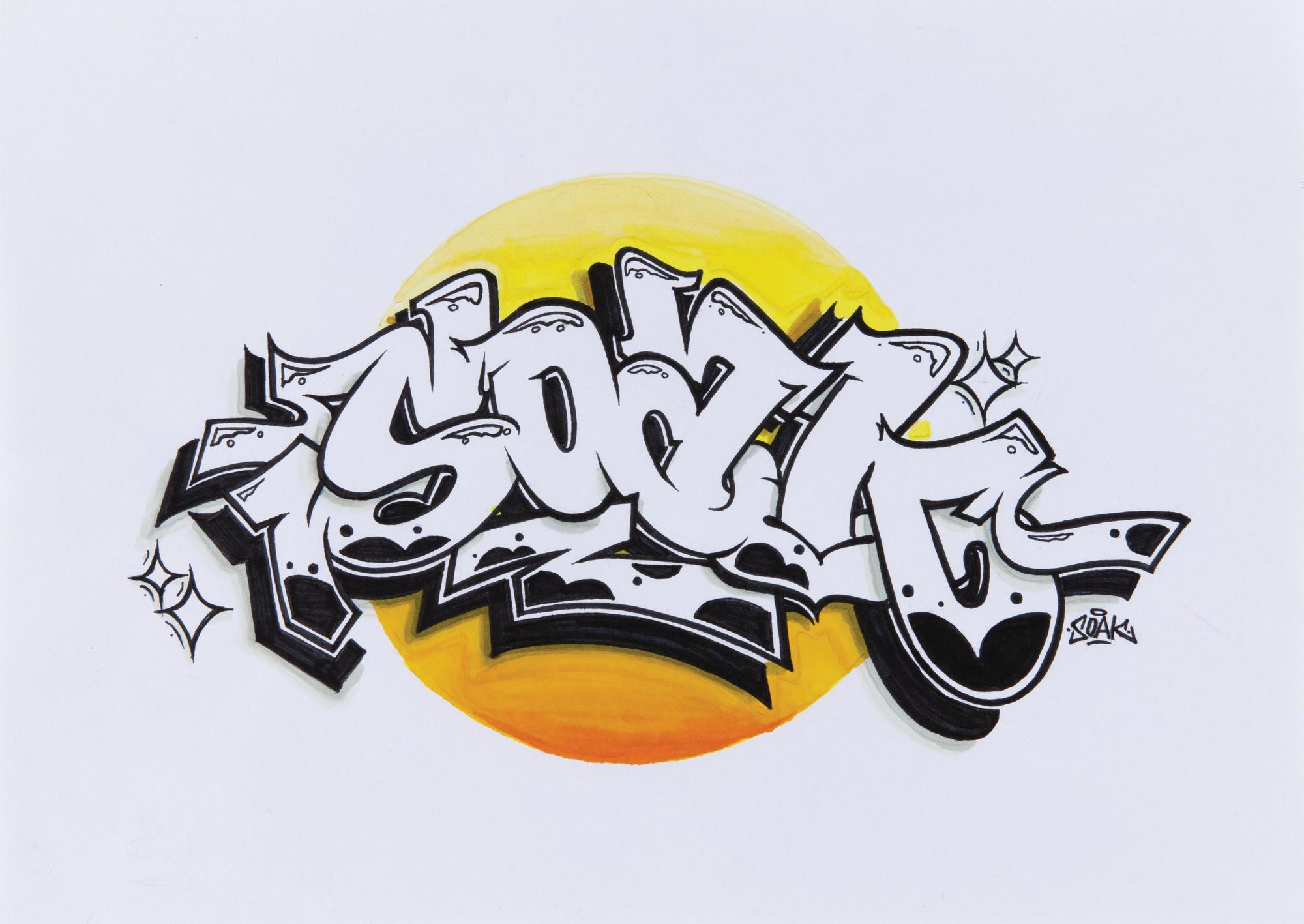
How do you feel about the exhibition, 100 Vandals? The title is provocative, but it also captures how a lot of people think about graffiti.
The exhibition is called 100 Vandals, and yet most of these people are in the creative industries. Some of them are CEOs, they’re filmmakers, they’re music producers, they’re mums, grandparents, and some are still in their teens. Graffiti, for a lot of us, was a starting point. We were in that community then and now we’re part of a broader community of everyday people. And we’re doing so much more, artistically speaking.
How do these so-called vandals feel about showing their work in the state gallery?
I think a lot of us are going to be cautious, which makes sense. They’re like, “Is this a trap?”. They work on the side of train tracks, abandoned warehouses, in the middle of the night. That’s where they’re comfortable. Bright lights and Perspex cases are very foreign. But they’re celebrating at the same time, it’s a progressive move. If we don’t do this, if we don’t document, our whole culture and artform will disappear from Perth. We don’t want to be rock stars, we just want to go, “You acknowledge it, that’s cool, here’s the bank of work we’ve done for the past couple of decades.”
This article was first published in the print publication The View From Here in October 2021 under the title Outside In.
Ian Strange is a multidisciplinary Australian artist originally from Perth. With roots in graffiti and street art, Strange’s contemporary work explores architecture, space, and the home and is held in public and private collections around Australia and the world. He was guest artistic director at The Art Gallery of Western Australia for 2020 — 2021.
